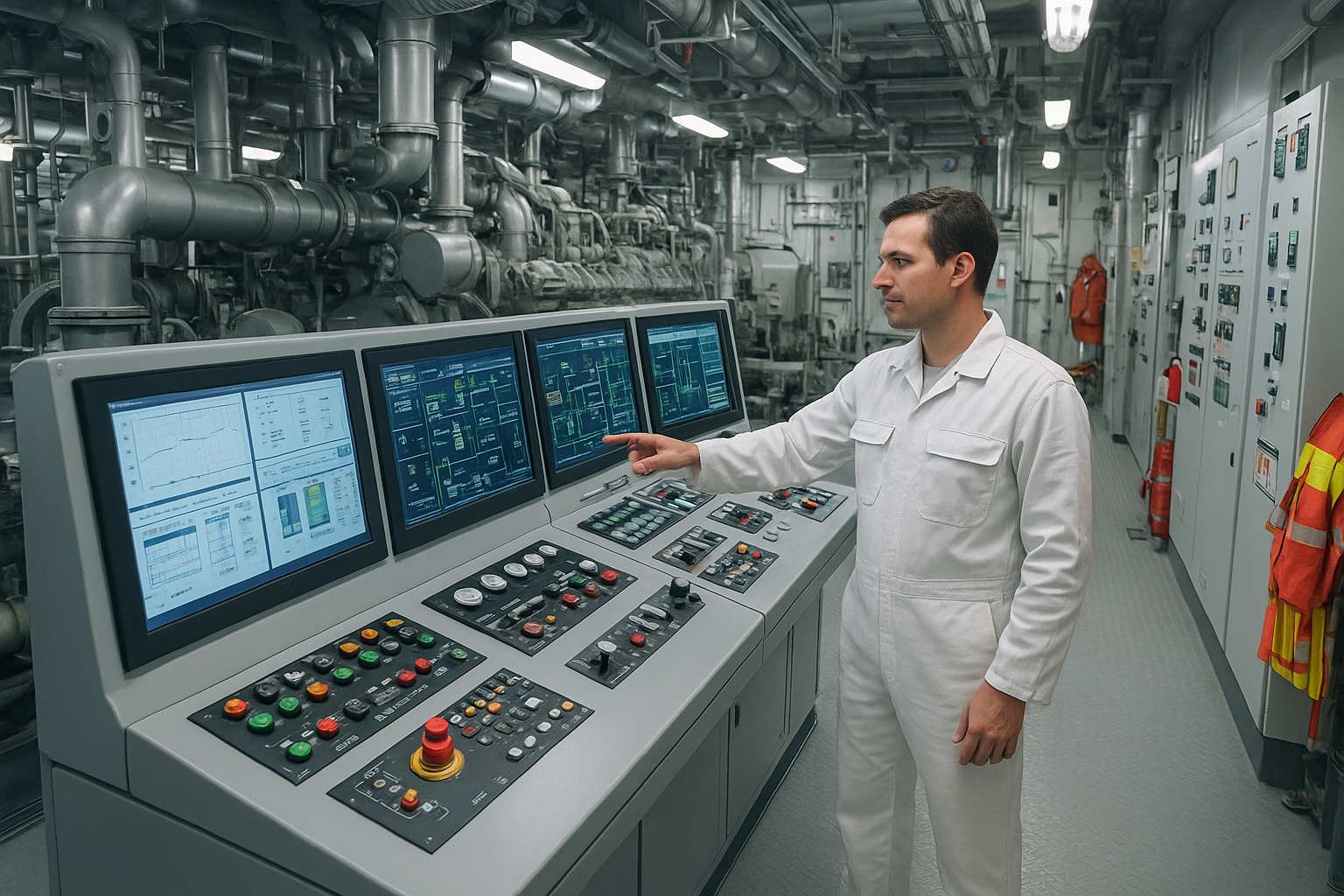
Engineering Emergencies Onboard Ships: When Things Go Wrong at Sea
The Reality of Life at Sea
The Training That Saves Lives
The Most Common Engineering Emergencies
Tier 1: Most Dangerous Emergencies
1. Fires and Explosions
- Electrical faults and short circuits
- Fuel leaks and ignition sources
- Hot work (welding, cutting) gone wrong
- Overheating machinery
- Cargo fires (especially dangerous with certain types of cargo)
- High-pressure fuel line leaks causing atomized fuel spray onto hot surfaces
- Hot lube oil leaks and fuel oil leaks
2. Flooding and Water Ingress
- Hull damage from grounding or collision
- Seawater piping leaks and ruptures
- Freshwater piping leaks
- Cooling water piping leaks
- Valve failures
- Overflow from tanks or bilges
- Weather damage to hatches or openings
- Weather-related issues that can cause flooding
3. Loss of Power
- Main engine failure - when the main propulsion engine goes down, you're dead in the water
- Generator failures - loss of electrical power generation
- Lube oil pressure loss - when the ship lists too much from port to starboard during rough seas, engines may lose lube oil pressure due to oil going below the "low low" alarm setpoint
- Cooling system failures - engines can overheat and seize up
- Fuel system problems - contaminated fuel, fuel leaks, or fuel pump failures
Tier 2: Critical Systems Failures
4. Engine Room Explosions and Steam System Failures
- Crankcase explosions: Catastrophic engine failures that can destroy the entire engine
- Boiler explosions: High-pressure steam disasters that can level the engine room
- Steam system leaks: Main steam and auxiliary steam system leaks
- Pressurized piping ruptures: High-pressure system failures
- Steering gear failures: Loss of steering control, especially dangerous in confined waters
5. High-Voltage Electrical Emergencies
- Arc flash incidents: Extremely dangerous and can be fatal, especially on high-voltage vessels like diesel-electric ships
- Electrical fires
- Power outages and blackouts
- Ground faults and short circuits
- Generator failures
- High-voltage system failures on diesel-electric ships
Tier 3: Dangerous but Containable
6. Fuel and Lube Oil Emergencies
- High-pressure fuel line leaks: Can cause atomized fuel to spray onto hot surfaces, creating immediate fire risk
- Fuel line leaks: General fuel system leaks and failures
- Hot lube oil leaks: High-temperature lube oil leaks that can ignite
- Fuel oil leaks: Various fuel oil system failures
7. Pump Failures and Piping Leaks
- Pump failures across various systems
- Seawater piping leaks and ruptures
- Freshwater piping leaks
- Cooling water piping leaks
- Refrigeration refrigerant leaks
8. Weather-Related Engineering Emergencies
- Heavy weather damage to equipment and structure
- Loss of cargo or containers overboard
- Engine room flooding from weather damage
- Loss of power due to weather-related equipment damage
- Navigation and communication equipment failures
- Ship listing and lube oil pressure loss: When the ship lists too much from port to starboard during rough seas, engines may lose lube oil pressure due to oil going below the "low low" alarm setpoint
Why These Emergencies Are So Dangerous
- Isolation: You're often hundreds of miles from help. There's no calling 911 or having emergency services rush to your aid.
- Confinement: Ships are confined spaces with limited escape routes. If something goes wrong, you can't just run outside.
- Interconnected systems: Everything on a ship is connected. A failure in one system can cascade into multiple failures.
- Environmental factors: The ocean environment is harsh and unforgiving. Weather, saltwater, and constant motion can make problems worse.
- Limited resources: You only have what's onboard the ship. There's no running to the hardware store for spare parts.
- Time pressure: Many emergencies require immediate action. You don't have time to think things through - you have to act based on training and experience.
The Human Factor
What's Next: Deep Dives into Each Emergency Type
- Detailed procedures for handling fires and explosions
- Step-by-step flooding response and damage control (including seawater strainer maintenance procedures)
- Loss of power emergency response and recovery procedures
- Engine room explosions: crankcase and boiler disaster response
- High-voltage electrical emergencies and arc flash safety
- Fuel and lube oil emergency containment procedures
- Steam system failures and high-pressure piping ruptures
- Steering gear failures and emergency steering procedures
- Pump failures and piping leak response procedures
- Weather-related emergency preparation and response
The Bottom Line
Share This Article
Related Articles
Continue reading with these related articles

Flooding Emergencies Onboard Ships: Detection, Response, and Damage Control
Learn about flooding emergencies onboard ships, from detection systems to response procedures. Discover how marine engineers handle seawater strainer failures, bilge alarms, and damage control to keep ships safe at sea.

Medical Emergencies at Sea: Onboard Medical Facilities and Emergency Medical Response
Discover how medical emergencies are handled at sea, from onboard medical facilities to helicopter medevac flights. Learn about cruise ship medical centers, hospital ships like USS Mercy and USS Comfort, and emergency medical response procedures.

Shipboard Emergency Communications Equipment: Radio Systems, EPIRBs, and Satellite Communications
Discover the critical emergency communications equipment onboard ships, from VHF radios and EPIRBs to satellite systems. Learn how ships maintain contact during emergencies and coordinate rescue operations.

Bridge Safety Equipment: Weather Detection, Radio Communications, and Emergency Beacons
Discover the advanced safety equipment in the ship's bridge, including weather monitoring, communication systems, and emergency positioning beacons that keep ships safe at sea.
© 2025 The Salty Mariner. All rights reserved.
